Cluster 7
Shining a Light on the Future: The Photonics Revolution in Healthcare, Energy, and Information Technologies
Instructors:
Ali Yanik, PhD
UCSC Department of Electrical and Computer Engineering
Reefat Inum, PhD Student
UCSC Department of Electrical and Computer Engineering
Prerequisite: Algebra and Introductory Physical Sciences or equivalent
Summary: In the last half-century, photonics, much like semiconductors, has initiated a groundbreaking shift in various sectors, particularly in healthcare, energy, and information technologies. Photonics, the science of light generation, manipulation, and detection, has become an integral part of our daily lives and the backbone of numerous modern technologies. This cluster aims to explore the fundamental principles of photonics and its diverse applications across critical fields. From advancements in medical imaging and diagnostics in healthcare, efficient energy sources in solar power technology, to high-speed optical communication systems in IT, photonics is at the forefront of innovation. Participants will delve into how photonics is driving the future of these sectors, understanding the underlying technologies such as fiber optics, biophotonics, laser engineering, and communication systems. This cluster is ideal for students and professionals eager to understand the role of photonics in shaping future technologies and its application in improving healthcare, enhancing renewable energy, and evolving information technology.
Fundamentals of Photonics
The short course on "Fundamentals of Photonics" is meticulously designed to provide participants with a foundational understanding of the principles and concepts underlying photonics. This course is ideal for those seeking to gain a comprehensive grasp of how light is generated, controlled, and detected, and the basic mechanisms at play in photonic systems. Upon completion, students will possess a solid foundation in photonics fundamentals, equipping them with the knowledge and skills to further explore or contribute to this rapidly advancing field.
Photonics Devices
The “Photonics Devices” course offers a focused exploration of cutting-edge photonics technology and its applications in healthcare, energy, and telecommunications. This course is designed to provide a deep dive into the workings and uses of various photonics devices, such as lasers, optical fibers, and photodetectors. Participants will learn how these devices are revolutionizing medical imaging, enhancing renewable energy systems, and transforming the telecommunications industry through high-speed, efficient data transmission. Combining theoretical foundations gained in “Fundamentals of Photonics” with practical insights, the course is ideal for students eager to understand and leverage the potential of photonics in these pivotal sectors.



